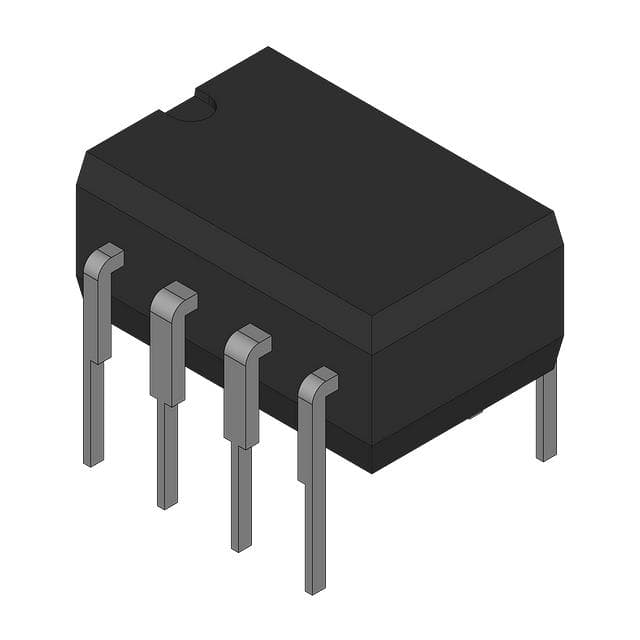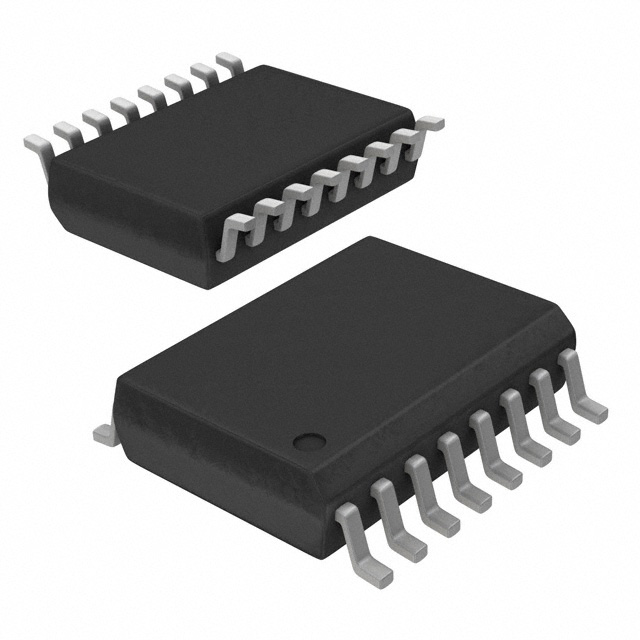Ⅰ. Introduction to Memory - Controllers
Ⅱ. Physical Characteristics of Memory - Controllers
Ⅲ. Electrical Characteristics of Memory - Controllers
Memory controllers are essential components in computer systems that manage the flow of data between the central processing unit (CPU) and various types of memory, such as RAM (Random Access Memory), cache memory, and storage devices. Their primary function is to ensure efficient and reliable data transfers, enabling the CPU to access and manipulate information stored in memory.

Memory controllers serve as intermediaries between the CPU and memory modules, translating the CPU's requests into the appropriate commands and timing signals required by the memory devices. They handle tasks such as address decoding, data buffering, data transfer synchronization, error correction, and memory access optimization.
One of the key roles of a memory controller is to facilitate the transfer of data between the CPU and memory modules. This involves generating memory addresses based on the CPU's requests and converting them into the format required by the memory technology being used. The controller also manages data transfers between the CPU and memory by coordinating the timing signals, data lines, and control signals.
Another important function of memory controllers is data buffering. They provide temporary storage locations, known as buffers, to hold data during the transfer between the CPU and memory. Buffers help smooth out any timing differences between the CPU and memory modules, allowing for more efficient data flow and reducing the likelihood of data loss or corruption.
Memory controllers also play a crucial role in error detection and correction. They incorporate error correction codes (ECC) or parity bits to identify and correct errors that may occur during data transmission or storage. By implementing error correction techniques, memory controllers enhance the reliability and integrity of data stored in memory.
Furthermore, memory controllers are responsible for optimizing memory access to improve system performance. They employ various techniques like caching, pre-fetching, and pipelining to minimize memory latency and maximize data throughput. These techniques involve predicting the CPU's future memory access patterns and proactively retrieving data from memory before it is explicitly requested by the CPU.
Different types of memory controllers exist to cater to specific memory technologies, such as DDR (Double Data Rate) SDRAM (Synchronous Dynamic Random Access Memory), NAND flash memory, or solid-state drives (SSDs). Each memory type has its own unique interface and protocol, and memory controllers are designed to adhere to these specifications.
In summary, memory controllers are critical components that facilitate efficient and reliable data transfers between the CPU and memory modules. They handle address translation, data buffering, error correction, and memory access optimization, ensuring smooth operation and optimal performance of computer systems.
Physical Characteristics of Memory - Controllers
The physical characteristics of memory controllers can vary depending on the specific implementation and the memory technology they are designed to work with. However, there are a few general physical aspects to consider:
1.Integrated Circuit (IC) Package: Memory controllers are typically implemented as integrated circuits, commonly known as chips or ICs. These ICs are housed in packages that provide physical protection and electrical connections. The package type can vary, such as Ball Grid Array (BGA), Quad Flat Package (QFP), or Small Outline Integrated Circuit (SOIC), among others.
2.Pin Configuration: Memory controller ICs have numerous pins that serve as the interface for communication with other components in the system. These pins provide connections for power supply, ground, data lines, address lines, control signals, and other necessary signals specific to the memory technology being used.
3.Form Factor: Memory controllers can be found in various form factors depending on the intended application. For instance, in desktop or server environments, memory controllers may be integrated into the CPU or chipset. In other cases, especially in embedded systems or specialized devices, memory controllers might be implemented as standalone chips or modules.
4.Cooling: Depending on the power dissipation and thermal characteristics of the memory controller, cooling mechanisms may be required to maintain the temperature within safe operating limits. This can include heat sinks, fans, or liquid cooling systems, particularly in high-performance systems.
5.Signal Integrity Considerations: Memory controllers handle high-speed data transfers and require good signal integrity to ensure reliable communication. Design considerations include proper impedance matching, routing of critical traces, minimizing noise and crosstalk, and managing transmission line effects.
6.Power Requirements: Memory controllers consume power for their operation. The power requirements can vary depending on the complexity of the controller, the memory technology, and the data transfer rates. Adequate power supply and power management mechanisms must be in place to ensure stable operation.
7.Compliance with Standards: Memory controllers must adhere to industry standards and specifications for compatibility and interoperability with memory modules. Standards like JEDEC (Joint Electron Device Engineering Council) define the electrical, mechanical, and signaling characteristics of various memory technologies, and memory controllers must meet these requirements to ensure proper functionality.
It's important to note that the physical characteristics of memory controllers can vary significantly based on the specific implementation and memory technology they are designed for. Different memory technologies, such as DDR, NAND flash, or solid-state drives, may have unique requirements and interfaces, leading to variations in the physical design and packaging of memory controllers.

Electrical Characteristics of Memory - Controllers
The electrical characteristics of memory controllers encompass various parameters and specifications that define their operation and compatibility with memory modules. Here are some key electrical characteristics to consider:
1.Voltage Levels: Memory controllers operate within specified voltage ranges. They require a stable and regulated power supply to ensure proper functionality. The voltage levels can vary depending on the specific memory technology and the controller's design. For example, DDR SDRAM controllers typically operate at 1.8V, 2.5V, or 3.3V, while NAND flash memory controllers may operate at different voltage levels, such as 1.8V or 3.3V.
2.Signal Voltage Levels: Memory controllers interface with memory modules using various signal lines, including data lines, address lines, control signals, and clock signals. These signals operate at specific voltage levels to ensure proper communication and data integrity. The voltage levels can be defined by industry standards, such as JEDEC specifications for memory technologies like DDR or NAND flash.
3.Signal Timing: Memory controllers have specific timing requirements for data transfers and control signals. Timing parameters include signal rise and fall times, propagation delays, setup and hold times, and clock frequencies. Adhering to the specified timing characteristics ensures reliable data transfer and synchronization between the controller and memory modules.
4.I/O Standards: The input/output (I/O) standards used by memory controllers define the electrical characteristics of the signals that interface with memory modules. Common I/O standards include TTL (Transistor-Transistor Logic), CMOS (Complementary Metal-Oxide-Semiconductor), LVDS (Low Voltage Differential Signaling), and SSTL (Stub Series Terminated Logic), among others. These standards define voltage levels, impedance, and other electrical parameters to ensure proper signal integrity and compatibility.
5.Impedance Matching: Impedance matching is crucial for maintaining signal integrity and minimizing signal reflections. Memory controllers and memory modules must have impedance characteristics that match to avoid signal distortions and ensure reliable data transmission. Proper trace impedance design and termination techniques are employed to achieve impedance matching.
6.Power Supply Decoupling: Memory controllers require stable power supplies to operate correctly. Power supply decoupling techniques, such as using capacitors, are employed to minimize noise and voltage fluctuations in the power lines. These decoupling capacitors help to filter out high-frequency noise and provide transient current during rapid changes in power consumption.
7.Current and Power Consumption: Memory controllers have specific current consumption and power dissipation characteristics. The current consumption depends on the controller's design, data transfer rates, and memory technology. It is essential to ensure that the power supply can provide sufficient current and that the thermal design can handle the power dissipation to prevent overheating and ensure reliable operation.
These electrical characteristics are crucial for ensuring proper operation, compatibility, and performance of memory controllers with memory modules. Adhering to industry standards and specifications helps ensure reliable data transfers, signal integrity, and system stability.



